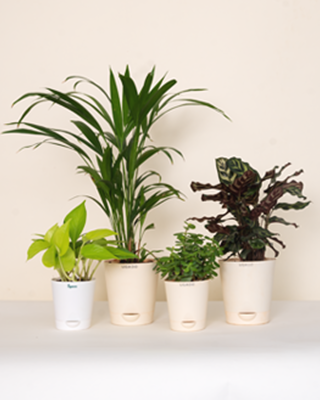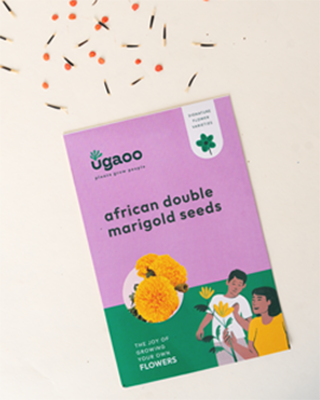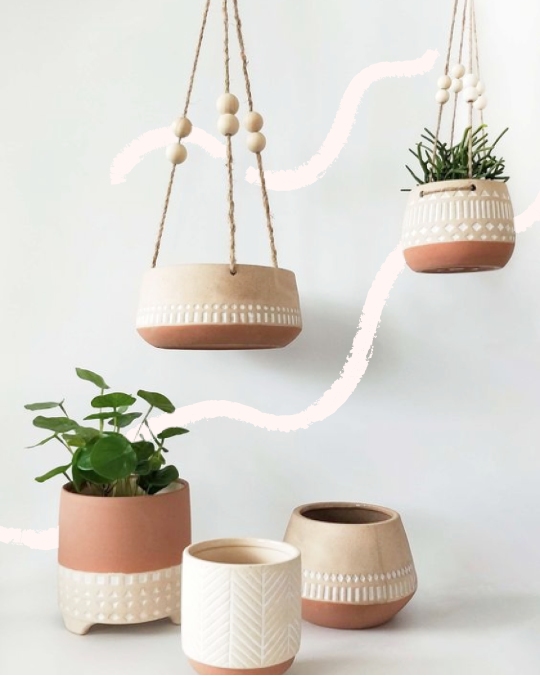Heliotrope is a term for both a color and a flower. Belonging to the Heliotropium family, there are more than 325 species within this genus of plants, commonly called 'Heliotropes.' In terms of the color, Heliotrope is a beautiful, deep purple shade. Literally understood, this term means "turn after the sun" and that is exactly what the flowers tend to do.
Let's try to better understand these flowering plants!
• Heliotrope Flowers: Myths Surrounding Their Origins

This story originates from ancient Greece, from a time when the Gods were still around on earth. The story starts with an ocean nymph, Klytia, who fell in love with Helios, the sun God. For a short while, her feelings were reciprocated and he made her believe he loved her, too. But as Greek Gods have always been depicted to, Helios soon lost interest in Klytia and began pursuing Leukothea, another Sea Goddess.
Appalled and outraged, Klytia went to the Goddess's father who then decided to take revenge on his "cheating daughter", and did so by burying her alive. She believed taking her 'competition' out of the running would solve her problems and let her get back with Helios. But she couldn't be more mistaken. He simply moved on and she went to the surface of the Earth, sat on a sun-warmed rock and spent the rest of her time yearning for Helios.
However, he never came and she soon became a 'Heliotrope' flower, sitting on the rock and facing the sun wherever it moved. Thus Heliotrope flowers are literally translated to "turn to face the sun."
• Know the Heliotrope Plant: Features and Benefits

Scientifically called Heliotropium arborescens, the Heliotrope plant is beloved for its stunning purple flowers that grow and bloom in clusters. Along with and apart from that, here's what you need to know about the Heliotrope plants:
1. Heliotrope Common Name
Apart from being named 'Heliotropes', these flowers have also earned another name because of a key feature of theirs. This plant is often called the "Cherry Pie Plant", paying homage to its lovely sweet, vanilla-cherry scent.
2. Heliotrope Bloom Time
Heliotrope flowers generally bloom from the spring to fall months, providing a continuous and consistently vibrant display of stunning flowers in purple and white.
3. Toxicity Levels
Heliotropes are lovely flowers to grow if you're looking to create an ornamental display of flowering plants. However, you must know that the ingestion of this plant is extremely toxic to all animals and even humans.
4. Fragrant Flowers with Deep Meanings

The Heliotrope flower meaning stems from the Greek myth tied to this plant. So, what do Heliotropes symbolize? These beautiful purple flowers generally signify eternal love, devotion, and admiration. Additionally, its bloom are wonderfully fragrant and give off a sweet vanilla-cherry scent.
5. Heliotrope Varieties of Flowers
These flowers grow in wonderful, tight-knit clusters, giving off a memorable fragrance. Additionally, they also grow in a variety of colors ranging from purple and blue to white. White Heliotrope flowers are a relatively rare sight but if you do witness these flowers in bloom, remember to take a mental screenshot because their beauty is absolutely memorable!
6. Pollinators Love Heliotropes

Due to their sweet, alluring fragrance, Heliotrope flowers are beloved by pollinators such as butterflies and bees. This makes these flowering plants perfect for pollinator gardens.
7. Versatile Usage in Gardens
Heliotrope flowers are beloved for their versatile usage in gardens. They can be used as border plants, grown in containers, and even in mixed flower beds.
• Heliotrope Plant Care: Basics to Know to Properly Grow
Heliotrope flowers bloom all throughout summer and sometimes even last time late spring. Essentially, these flowering plants have a long bloom time, making them beloved options for ornamental gardens. However, we do advise against growing this plant in your home if you have curious pets just waiting to get themselves in trouble.
Let's look at some basic Heliotrope care requirements:
1. Planting Heliotrope Seeds
Spring is often considered the growing season for Heliotrope plants. So, if you're looking to plant its seeds, this season is the time for it. Sow these seeds 1 inch apart in a container and remember to keep this container in enough light.
2. Heliotrope Growing Conditions

Heliotropes prefer adequate sunlight for at least 6-8 hours of the day. They like and appreciate full sunlight to partial shade. Choose a location that receives bright, direct light during the morning hours and slightly shaded light during times of the harsh afternoon light.
3. Watering Requirements
While trying to successfully complete Heliotrope germination with seeds, it is essential to remember that in order to germinate, seeds need consistently moist soil. You must strike a balance between the watering so that you don't over or underwater. If you underwater them, the seeds will not have enough moisture to germinate. Whereas if you overwater, the seeds will suffocate and not have space to grow roots.
4. Fertilization

When growing Heliotropes, it is essential to know that germinating seeds may need a little bit of a push. So, provide your Heliotrope seeds with a balanced liquid fertilizer and when the plant starts to show signs of flowering, you can also provide it with Epsom Salt to promote blooming and growth.
5. Pruning
With flowering garden plants, it is key to know that pruning is crucial for their health. Prune/deadhead all spent or dying flowers to ensure that the plant does not spend any energy on seed production. This will allow it to bloom more and spend energy on creating flowers.
• Common Problems with Growing Heliotropes
Heliotropes are perennial flowers that bloom all summer, meaning they are relatively more hardy and easy to maintain as well. However, like every plant, there are a few common problems that Heliotrope plants face while growing in gardens. Here are a few to watch out for:
1. Powdery Mildew

This is a commonly observed fungal disease that appears as powdery white spots on the leaves of a plant. Heliotropes are somewhat susceptible to powdery mildew and you must keep an eye out for these white spots as they may easily appear on the foliage.
What can you do to avoid it? Avoid overhead watering and water the plant at the base instead. Additionally, you must also ensure good air circulation for and around the plant.
2. Root Rot
Flowering plants tend to be susceptible to root rot but all plants can be affected by this if watered irresponsibly. When watering, strike the right balance so as to not over or underwater. Overwatering can also be caused by poorly drained soil. So, remember to plant your Heliotropes in well-drained soil in a pot with adequate drainage holes.
3. Pests to Watch Out For

More often than not, aphids, spider mites, and whiteflies may attack Heliotropes. The best thing to do is catch the problem in its early stages and treat it as soon as you spot it. You can make use of insecticidal spray or neem oil.
4. Heat Stress
If you place your Heliotrope plant in uncontrolled, hot environments, they will definitely react to the temperatures. This can cause wilting and even reduced flowering due to high temperatures. So, remember to provide your plant with shade during the hot afternoon heat.
Caring for plants means knowing and understanding their individual needs as different plants have varied requirements. However, understanding your environment is also key in helping your plant thrive as you will then be able to adjust it well to its immediate surroundings when you're equipped with knowledge on both things.
Now that you know more about Heliotrope plants and flowers, you can do well for them and create a stunning ornamental display in your own garden! Happy gardening!
















